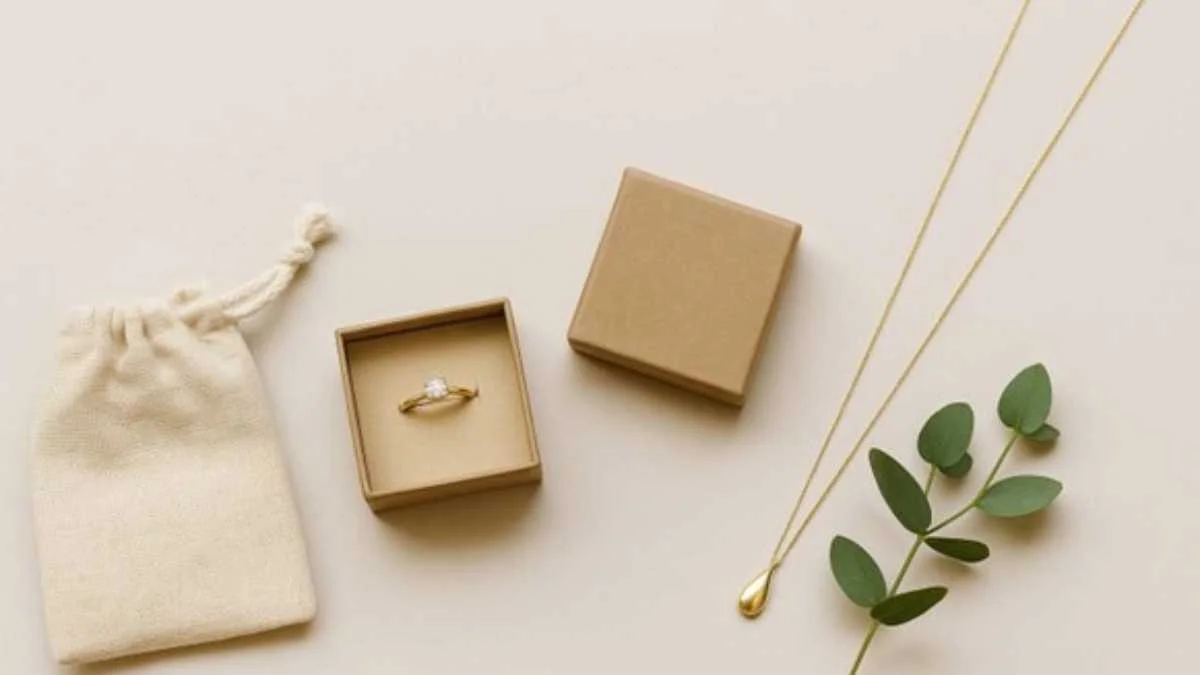GENERAL
Greener Gold: How Jewelry Brands Are Redefining Sustainability

Introduction
As green is on the agenda in today’s world, the jewelry industry is facing increasing and escalating pressure to prove its green credentials. The process from the extractive mining of metals to creating exquisite pieces hurts the earth at every step. As consumers are increasingly becoming conscious, jewelry companies are now being compelled to turn green, not only to save the planet but also to appeal to ethical consumers.
Table of Contents
Understanding the Environmental Impact of Jewelry
The traditional jewelry-making process is filled with environmental issues. Gold and gemstone mining will lead to deforestation, soil contamination, and water contamination. The use of toxic chemicals like mercury and cyanide in gold mining is highly environmentally hazardous as well as lethal to human beings. Also, the energy-intensive metal refining and gemstone cutting processes release greenhouse gases into the atmosphere.
The World Gold Council reported that a single gold ring generates up to 20 tons of mining waste, typically toxic residue, and heavy metal contamination. Aside from environmental concerns, other ethical concerns involve exploitative labor, such as conflict diamond trade, financing violence, and human rights violations. They are multi-faceted problems, for which a holistic approach to jewelry industry sustainability is necessary.
Embracing Sustainable Materials
One of the most effective ways of minimizing environmental degradation is the use of recycled materials. Recycling gold and silver cuts down on new mining demand, thus conserving natural resources while minimizing environmental destruction. The Environmental Protection Agency (EPA) promotes the use of recycled metal because it consumes up to 90% less energy compared to ore processing.
Similarly, recycling old gems or utilizing synthetic diamonds can minimize the environmental and ethical cost of traditional gem mining significantly. Synthetic diamonds, for instance, are created in plant labs using high-technology methods that replicate the natural diamond-forming process. The diamonds so formed are virtually the same as naturally mined diamonds, but without the environmental and ethical cost. Utilizing synthetic substitutes enables companies to provide customers with quality products that are symbolic of sustainable values, too.
Increasingly, jewelers such as Brilliant Earth and Vrai have established brand equity on ethically produced or sourced gemstones, responding to changing consumer calls for cleaner production.
Ethical Sourcing and Transparency
Transparency along the chain is most significant in building consumer trust and ethical behavior. Brands need to make every effort to procure materials from suppliers with good labor practices and environmentally friendly processes. Third-party certification by organizations like the Responsible Jewellery Council (RJC) and Fairmined gives assurance of ethically and responsibly mined materials.
Utilization of traceability systems allows brands to track the production process of the materials from sourcing to the end product. Not only is adherence to ethical codes ensured, but it becomes feasible for brands to convey commitment to sustainability in a few words. Solutions like blockchain technology are already being implemented for tracing the procurement of gems to offer irrevocable evidence and improved accountability.
Gen Z big spenders were also polled by McKinsey & Company in a traceability and transparency study, with the title ranking among the top most fundamental priorities, both imprinting their marks on virtues of unity as ethics and brand integrity.
Eco-Friendly Production Practices
Sustainable jewelry production extends beyond material sourcing to encompass production processes as well. Energy-efficient technology-driven production, minimizing waste, and the utilization of non-toxic chemicals are all part and parcel of minimizing the environmental impact of production. The brands can take an extra step to have renewable sources of energy for powering operations, further minimizing their carbon footprint.
Further, adopting circular economy concepts—where designs are made to last, are repairable, and ultimately recycled—can facilitate much greater sustainability. Timeless design and repair services encourage buyers to retain and refurbish jewelry, thus avoiding demand for new material.
For example, Scandinavian jeweller Pernille Corydon launched a take-back scheme for damaged jewellery to encourage recycling and extended product lifetimes. Not only is the company stingy in terms of thrift, but also circular, sustainable between consumer and business.
Sustainable Packaging Solutions
Packaging is a large part of the environmental impact of a product. Most jewelry packaging is unnecessary, non-recyclable plastic. A big amount of waste can be cut down by converting to environment-friendly materials like recycled paper, biodegradable substances, and reusable boxes for packaging.
Innovative packaging options using less material without compromising on looks are drawing cross-industry interest. Companies can also foster a culture of sustainability by making consumers more aware of recycling and reusing packaging. Materials like FSC-certified paper, mushroom packaging, and recycled cotton fabric pouches are not only handy but also send a very strong message of being a responsible brand member.
Also, a growing use of QR codes printed inside boxes to convey sustainability stories instead of printed brochures, once more saving paper and promoting digital interaction. Get into the details.
Consumer Education and Engagement
Empowering consumers with the social and environmental stakes in a purchase makes them decision-makers. Brands need to be transparent to communicate sourcing, production, and sustainability initiatives. Storytelling to describe what an object goes through, from raw material to product, can connect a consumer to a brand. Transparency can alter the trajectory of an industry.
Being done to consumers with sustainability programs, certifications, and experiential engagement also makes a brand green. Online “behind-the-scenes” factory tours of the atelier, eco-factories, and artists’ narratives that are retailed to provide authenticity and information simultaneously.
By building an educated and informed customer base, green brands not only generate green demand but also environmental consciousness in general. More than 70% of millennials, as indicated by a recent survey conducted by Forbes,are even willing to pay a premium for products and services offered by firms that are concerned about sustainability at an environmental level.
Collaborations and Industry Initiatives
Collaboration with environmental organizations, artisans, and other stakeholders can increase the sustainability efforts of a brand. Collaboration with NGOs that focus on environmental conservation or fair labor conditions can infuse specialized knowledge and expertise. Participation in industrywide initiatives to create sustainability standards can also drive systemic transformation.
For instance, investing in artisanal mining communities to transition to cleaner and more sustainable production methods not only delivers environmental value but also social justice. Investing in community and capacity building ensures brands get industry sustainability down the line.
Organizations like PACT and the Alliance for Responsible Mining offer a channel whereby brands can invest directly in responsible sourcing programs that change the conditions and lives of poor miners.
Conclusion
Environmental protection as a business practice of jewelry companies is a holistic process that encompasses ethical sourcing, sustainable materials, environmentally friendly production, responsible packaging, consumer education, and partnership. By integrating these practices into their business, companies not only minimize their impact on the earth but also touch the conscience of more aware consumers.
Sustainability is no longer a nicety, it’s a bare minimum. Those brands that meet the challenge with integrity, innovation, and transparency won’t only save the world, they’ll win the long-term loyalty of a new generation of consumers who demand their beauty with a conscience.
-

 GENERAL5 months ago
GENERAL5 months agoChristofle – For Those Who Dream of Family Heirloom Silver
-

 SPORTS7 months ago
SPORTS7 months agoDiscover the World of Football with Streameast: Watch Your Favorite Leagues and Tournaments
-

 GENERAL4 months ago
GENERAL4 months agoUncovering the World of кинокрадко: The Dark Side of Film Piracy
-

 GENERAL2 months ago
GENERAL2 months agoATFBooru: Anime, Gaming, and Subculture Imageboard





























